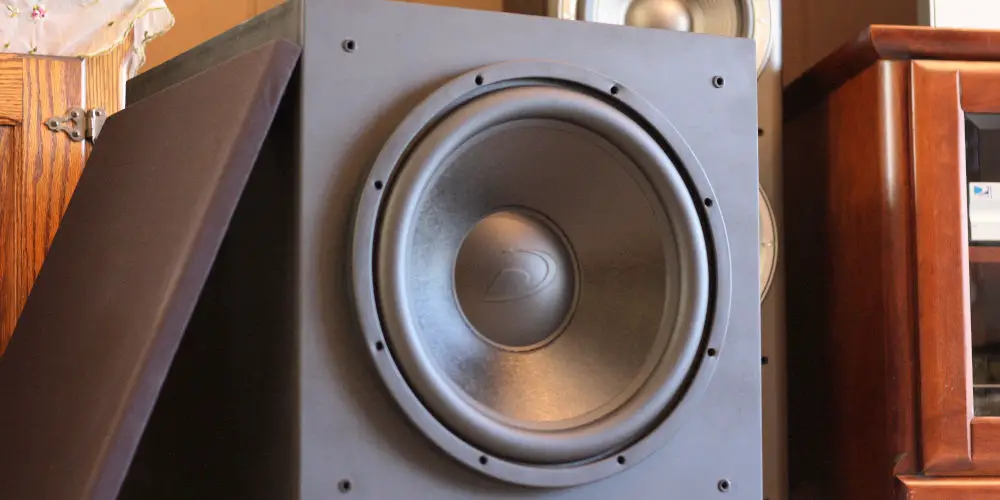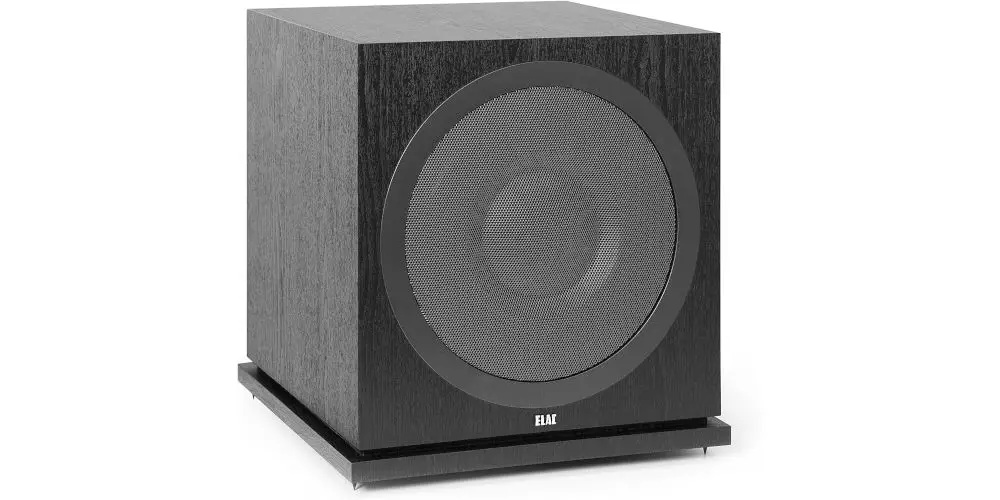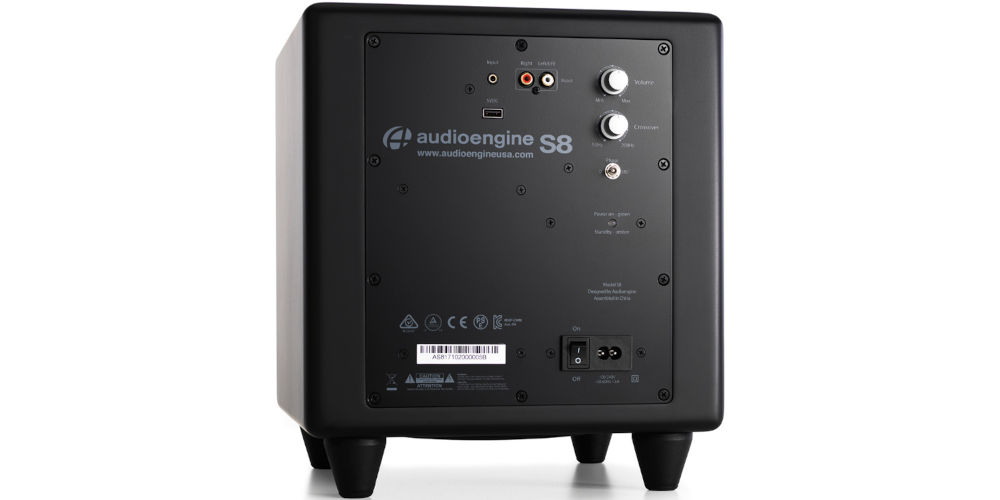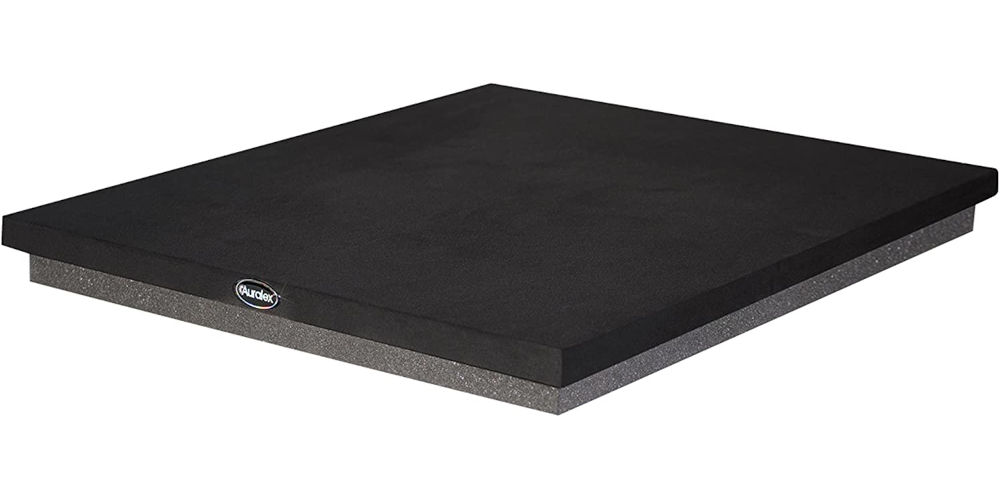Home cinema subwoofer buying guide

Without the right subwoofer, your home cinema will sound flat. It’s why choosing one for your home cinema can be tricky. Thankfully, this subwoofer buying guide will help you to easily choose the right one.
There’s plenty of subwoofers available, but they largely look the same. Usually, they are a black cube with a grill on the front and a patch panel on the rear. Some brands offer versions in white and walnut but that’s as exciting as they get, or so you might think!
First appearances can be deceiving as there are plenty of factors to consider when buying the best powered subwoofer for your home cinema room. What size should you get? How many watts do you need? Should I buy a sealed or ported? Where does the sub go?
Don’t worry, in this subwoofer buying guide, we’ll cover all of these questions and more to help you get the best sounding bass possible.
Choosing the right size subwoofer for your space
Size is often the first element that many consider, why settle for a 10-inch subwoofer when you can squeeze a 15-inch unit into your room. Unlike high frequencies which can be easily reproduced using a small surface area, the low end needs a larger space to create a deep sound.
Generally speaking, a woofer with a larger surface area will offer a wider frequency response. You’ll see this indicated in Hz in the specification and sometimes even on the unit.
You might be tempted to buy the largest and more powerful sub you can find. However, as is often the case, bigger isn’t always better! It’s important to match your sub to the other speakers in your set up to create an even sound across the frequency spectrum.
Contrary to current popular belief, there is such a thing as too much bass. The best sounding speaker set ups product a well-rounded sound where you can hear every nuance in the music or audio.
Matching a sub with your current speakers
If your system uses compact satellite or bookshelf speakers, then an 8″ or 10″ sub will pair nicely with them. However, if you’re using big floor-standing speakers with a large centre channel, then a 12″ sub will ensure a complete sonic experience.
If your cinema room is larger and more of a multi-purpose space, then invest in a large subwoofer. It will move more air, producing a more detailed bass sound.
Similarly, if you’re adding a sub to your bedroom or a smallish TV room, then consider a smaller unit as you don’t want to overwhelm your space with a powerful low end.
In short, choose a subwoofer that appropriately matches the size of your other speakers and your space.
What is a crossover?
The crossover is an electronic circuit that routes all frequencies below a specific point to the subwoofer. All frequencies above that point are routed to the main, centre, and surround speakers.
The majority of subwoofers and AV receivers have a variable crossover frequency, allowing you to set the sweet spot. Some are fixed around the 100 Hz mark.

photo by Elac
How much bass is enough?
The number of watts you need from your subwoofer will depend on what you typically watch. If you listen to music and watch plenty of action movies, then you’ll want a larger sub with more power. A 12-inch sub such as the DALI SUB E-12 F active subwoofer will be ideal in this situation.
However, if you spend your free time watching comedy shows, sports or kids movies, you can get away with much less low end. Even in a big room, a smaller subwoofer, such as the Cambridge Audio Minx X201 will be perfect.
Do you have enough power?!
Unlike the majority of speakers, which are passive and powered by an external amplifier (such as an AV receiver), most subwoofers are powered. As they have an amplifier built-in, you don’t need to waste time searching for a separate amp.
That said, and just like with speaker sizes, there are plenty of options available. So, you might wonder how much power do you need. Sadly, there’s no correct way to calculate the average power requirement.
The more wattage the amp puts out, the more powerful and impactful the low end will sound. Ideally, you should aim to buy the subwoofer with the highest wattage output for your budget. However, don’t be tempted to blow your budget by buying the unit with the largest wattage. Instead, look for value for money.
Look at the continuous power or RMS rating as this is the amount it can comfortably produce. You’ll probably also see a peak power rating, which might look impressive but has little bearing on real-life performance (for more, read: RMS vs peak). Focus on the RMS rating and ignore any others.
For example, the previously mentioned Cambridge Audio Minx X201 has an RMS of 200 watts. So is ideal for most TV snugs or small home cinema rooms. If you want more power, consider the Klipsch R-100SW, as it offers 300 Watts RMS, making it ideal for a serious home cinema set up.
Sealed vs ported subwoofer?
There are two main types of subwoofer enclosures: sealed and ported.
Sealed
Sealed enclosures (also known as acoustic suspension): As the name suggests, these isolate the speaker, and air doesn’t move in or out. They typically have a quicker response with a tighter and more accurate low end.
Ported
Ported boxes (or bass reflex enclosures): These have a built-in air vent that helps reinforce a low bass output. Typically they deliver a more powerful low end without needing as much power. That said, they can be considerably larger than their sealed box counterparts.
So which sounds better?
When designing a home cinema, each type offers something different, and so there’s no clear-cut winner. For movie watching, both designs offer an explosive bass sound that’s superb no matter what film you’re watching.
If you plan to listen to music using your home cinema system, then you’ll want to select the type of enclosure based on the type of music you listen to.
For jazz, classic and other acoustic genres of music, a sealed enclosure will provide a more natural yet loose sounding bass. If you enjoy rock, hip-hop or EDM musical genres, then a ported designed is a better choice as it will provide a more focused sounding low end.

photo by Audioengine
Front-Firing vs Down-Firing Subwoofers
As with the types of enclosures, we also have two types of speaker placement within the box: front-firing or down-firing.
A front-firing subwoofer has its main driver facing forward, exactly like other speakers. Whereas a down-firing one has the driver on the underside of the subwoofer, pointed down into the floor.
There are very minimal differences between the two, and you might prefer one over the other, depending on your placement. A front-firing subwoofer is ideal if it will be closer to the main speakers. If you have a larger space, then a down-firing sub will spread the bass more evenly.
For even more bass, consider buying a subwoofer with passive radiators. These unpowered drivers usually point out from the sides of the subwoofer and help carry your bass further. The extra cost is well worth it.
Where is the ideal subwoofer placement?
Unlike normal speakers, which are highly directional, you have more freedom to place your subwoofer. If you’re new to home cinema speaker placement, then start with my guide to the subject.
There is one small problem with subwoofers when it comes to placing them in a room. As powered speakers, they need to be close to a power socket. You’ll also need to connect them to your AV receiver as this device will distribute the signal to all of the speakers in your set up.
Bearing those in mind, you’re free to place your subwoofer where you feel it produces the best overall sound. So you’ll want to spend some time experimenting with different positions and listening to how each one sounds from a variety of locations within your room.
Should I use an isolation platform to prevent rattling?
Too much bass, even it’s just momentarily, can shake walls, glass, and windows, making them rattle like crazy. It’s enough to drive you mad! Thankfully, there is a solution to minimise rattling without losing any of your powerful bass sounds.
By investing in an isolation platform such as the Auralex Subwoofer Isolator, you can decouple your subwoofer from the floor. The rattling and vibrations will disappear, and you should find the bass is stronger, meaning you can turn it down.

photo by Auralex
Is it worth adding a second subwoofer?
Before you think we’ve lost our minds or are encouraging you to blow your budget, there’s good reason to consider adding a second sub to your home cinema room.
You’ll need to check that your AV receiver has two subwoofer connections (typically RCA outputs) or buy a splitter cable.
Using two subs allows you to better distribute the bass frequencies, especially helpful if you have tiered rows of seating. Also, if you can’t get enough bass, having two subs is a great way to satisfy your desires.
Are wireless subwoofers worth it?
Having to wire a sub into an AV receiver isn’t ideal, particularly as you usually end up needing to hide part of a long cable or finding you have one that’s just too short for the perfect placement. And let’s face it, who doesn’t enjoy crawling on their hands and knees to lay cables?!
Thankfully, a range of subwoofers are available that can operate wirelessly, although they still need to be connected to a power socket. How this work is simple, rather than plugging a cable into your AV receiver, you connect a transmitter.
The transmitter box then sends the signal to the sub without needing an audio cable. Some manufactures include this piece of kit with the sub, while others offer it as an optional accessory.
Don’t worry if yours isn’t wireless as you can buy a universal wireless kit that promises to transforms the majority of subs into a wireless unit.
How much should I spend on a subwoofer for my home cinema?
While you can buy a subwoofer for under £100, they aren’t the best. In our recent review of 10 of the best powered subwoofers, we covered units ranging from £150 to £850.
The best performing units average £300 in price. So, it’s worth spending around this figure when looking to buy a subwoofer. The more expensive units are well worth it, should you have the budget and are building a professional-level home cinema.
If you desire a top of the range cinema room, then expect to spend big on speakers and the subwoofer. The more expensive the subwoofer, the larger the output wattage and frequency range.
That said, if you’re serious about buying the ideal subwoofer, then spend some time at your local Hi-Fi store trying different units.
Using this subwoofer buying guide to buy the ideal unit
After reading this home cinema subwoofer buying guide, you should have a much clearer idea of what the idea sub is for your set up. Remember to look at RMS power, a speaker size that matches the other speakers in your configuration, and most importantly, an enclosure that isn’t too large for your room.
If you think your sub will cause things to rattle, then buy an isolation platform as it will minimise these noises that will drive you crazy! Ignore peak power, as this rating isn’t helpful. Do look for the best value for money and consider adding a second subwoofer.




